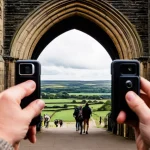Actionable Strategies for Improved Visitor Engagement
Creating memorable interactions is key to enhancing engagement at UK attractions. One effective strategy involves implementing interactive exhibits and activities that encourage visitors to actively participate rather than passively observe. These hands-on experiences make the visit more immersive, boosting both enjoyment and retention.
Staff play a crucial role, so training staff in customer service and engagement techniques cannot be overlooked. Well-prepared personnel can guide visitors, answer questions, and foster friendly, insightful interactions. This direct contact often shapes visitors’ overall perceptions and satisfaction.
This might interest you : How Can Visiting Lesser-Known Attractions Improve Your UK Travel Experience?
Another powerful approach is leveraging local culture and storytelling to create unique experiences. Incorporating regional history, folklore, or art connects attractions to their communities authentically. This cultural layer enriches visits with relevance and context, which captivates diverse audiences.
By combining these methods, UK attractions can elevate visitor participation effectively. Focusing on interactivity, skilled staff engagement, and culturally grounded narratives encourages longer stays and positive word-of-mouth, essential for ongoing success.
Also read : What Hidden Gems Can You Discover in the UK’s Scenic Landscapes?
Integrating Technology to Elevate Visitor Experiences
Technology in attractions is revolutionising how visitors engage with exhibits, making experiences more immersive and personalised. The adoption of augmented reality (AR) and virtual reality (VR) allows attractions to incorporate educational storytelling in innovative ways. Visitors can explore historical scenes, scientific phenomena, or art installations through AR overlays or immersive VR environments, enhancing both understanding and enjoyment.
Mobile apps offer practical benefits like navigation aids, tailored information, and personalised tours. For example, an app can suggest exhibits based on visitor interests or enable interactive quizzes, deepening engagement. Streamlined ticketing systems and contactless payments reduce wait times and improve overall flow, creating a smoother, stress-free visitor experience.
Implementing these digital tools in UK attractions addresses common frustrations linked to navigation and information gaps. It also resonates well with tech-savvy and younger demographics, encouraging repeat visits. Ultimately, embracing technology enriches visitor interaction by blending convenience, education, and fun, which are key to sustaining interest and boosting satisfaction.
Advancing Accessibility and Inclusivity
Creating accessible attractions is essential for truly welcoming diverse visitors. Designing spaces and exhibits with physical, sensory, and cognitive accessibility in mind ensures all guests can engage comfortably. For example, wheelchair-friendly paths, tactile exhibits, and clear signage improve usability for many.
Providing multilingual resources and support services addresses language barriers, allowing visitors from different backgrounds to navigate and enjoy UK attractions more easily. This could include audio guides, printed materials, or digital apps available in multiple languages.
Collaboration with accessibility experts and community groups is vital. They offer insights on practical needs, helping attractions implement effective inclusivity measures. This partnership promotes continuous improvement, ensuring accessibility evolves with visitor expectations.
By prioritising these strategies, UK attractions not only comply with legal standards but also cultivate an environment where every visitor feels respected and valued. Enhancing inclusivity broadens audience reach and encourages positive, memorable experiences for all.
Delivering Exceptional Customer Service
Elevating customer service is fundamental to increasing satisfaction at UK attractions. Continuous staff training focuses on soft skills such as empathy, effective communication, and problem-solving, enabling personnel to create welcoming, positive visitor interactions. Well-prepared staff can anticipate needs, handle concerns promptly, and personalise assistance, which significantly impacts overall guest experience.
To identify improvement opportunities, attractions implement robust feedback systems. These allow visitors to share insights on their experience anonymously or openly, helping management detect common issues and trends quickly. Acting on this data ensures services evolve to meet visitor expectations consistently.
Clear communication channels are another vital element. Proactively sharing information before, during, and after visits helps manage expectations and reduces confusion. This can take various forms, from pre-visit emails with tips to onsite signage and responsive social media engagement.
By prioritising customer service through ongoing training, feedback integration, and transparent communication, UK attractions can build trust and loyalty. This approach not only enhances visitor satisfaction but also encourages repeat visits and positive word-of-mouth—key drivers for sustained success.
Learning from Success: Real-World UK Case Studies
Examining UK attraction examples reveals how innovation drives visitor engagement and satisfaction. The Science Museum, for instance, integrates immersive technologies like AR and VR to turn exhibits into captivating stories. This best practice allows guests to interact with scientific concepts dynamically, enhancing both learning and enjoyment.
At Alton Towers, personalisation takes centre stage. The attraction uses digital tools to tailor experiences for families, offering custom itineraries and real-time updates. This approach not only improves flow but also deepens visitor connection, showcasing how technology can boost family experience effectively.
National Trust Sites lead in accessibility and sustainability by adapting historic properties to modern needs. They collaborate with communities and experts, ensuring spaces welcome diverse visitors while preserving heritage. Their success underscores the importance of inclusivity paired with environmental responsibility.
These cases collectively demonstrate the impact of combining technology, tailored services, and inclusivity. UK attractions that embrace such strategies position themselves as leaders in innovation, setting benchmarks for visitor experience across the sector.

